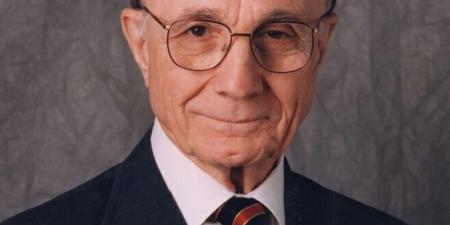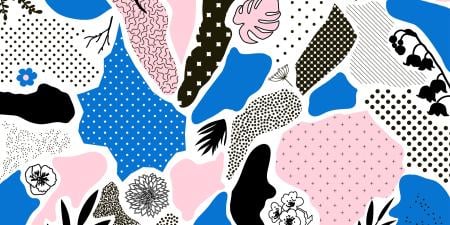Attendant: The doctor will be with you in a moment.
Elaine: [looking at her chart] "Difficult?"
Doctor: Elaine, you shouldn't be reading that. So tell me about this rash of yours.
Elaine: Well it's, it's. . . . You know I noticed that somebody wrote in my chart that I was difficult in January of '92, and I have to tell you that I remember that appointment exactly. You see this nurse asked me to put a gown on but there was a mole on my shoulder and I specifically wore a tank top so I wouldn't have to put a gown on. You know they're made of paper.
Doctor: Well that was a long time ago. How about if I just erase it. Now about that rash. . .
Elaine: But it was in pen. You fake erased.
Doctor: All right Ms. Benes. This doesn't look too serious. You'll be fine.
Elaine: What are you writing? Doctor?
In this classic Seinfeld episode, Elaine Benes learns that she was once labeled a "difficult" patient because she wouldn't cooperate with a nurse and change into a paper examination gown. Subsequently, Ms. Benes encounters problems getting necessary treatment for her rash and believes it is because physicians consider her to be a whiner and malingerer.
Most physicians were inspired to enter the profession by ideals of healing and caring, not by visions of patient-physician encounters like the one featured on Seinfeld. These essential ideals are, in large part, grounded in the virtues that define the character of a good physician; honesty, selflessness, courage, compassion, and trustworthiness. We start out committed to these ideals. Unfortunately, over time and experience, many if not most of us become more cynical and jaded. Our ability to show compassion and empathy towards each patient who seeks our help diminishes. This change can be thought of as maturation, a means of coping not only with the stress of practice but also with the everydayness that creeps into much of clinical practice. But such "maturation" can go too far, leading to an accelerated decay in the idealism among those in the profession1-3.
Between the early experience of medical students conducting their first "history of present illness" and the experience of the physician who dreads seeing the name of a particular patient on his or her appointment book, lies a complex socialization and development process characterized by, among other things, a language and discourse that is spoken by the "natives." We begin to learn the language as medical students and gain proficiency in it as we proceed into residency and practice. Replete with slang and humor, the native language emerges as a natural response of people who are constantly under stress. Physicians share their war stories with each other4-6, as a way to commiserate, perhaps painting their patients as laughable in order to let off steam. Who could help but laugh at Elaine's predicament with her rash and chart entries? But sometimes, especially during episodes of extreme stress, physicians characterize patients in ways that are unintentionally detrimental for both the speaker and listener(s).
For example, talk filled with slang about "gomers" and "hits" can cause conflicting reactions among medical students on the wards and others who are less war-tested. Medical students are often caught between "two worlds"7, identifying with patients because they don't feel as though they know enough to be doctors, yet having just enough experience to understand the frustrations expressed by the intern, resident, or attending physician. Native discourse invariably creates an "outsider" versus "insider" dynamic; patients are considered less than whole people and the physician's job is not to heal, but to patch them up temporarily, hoping all the while to be lucky in the on-call roulette and not get this same "hit" again. Caught up in this discourse, students and doctors-in-training eventually become socialized into a world whose slang erodes their own compassion and the perceived humanity of their patients.
Finding remedies for the kind of professional stress and burnout that manifests in bad doc talk is not that simple. As physicians, we must first recognize that difficulties in the clinical encounter come with the territory, and that some challenging situations are never going to be adequately resolved. Nevertheless, some contributions to the problem can be identified and minimized if not eliminated. One growing source of professional frustration and dissatisfaction, for example, is the increasing amount of time spent on administrative paperwork and other non-direct patient care activities. Long work hours for residents remains a structural defect in graduate medical training that has not yet been fully addressed. With more time, physicians could respond more fully to patients' questions about prescribed treatments and medications, thus improving patient adherence and compliance. With more time, physicians could rejuvenate their bioelectricity through other activities inside and outside the medical profession. Whether it is more quality time with family and friends or time spent mentoring a medical student or new physician, a physician who is happier will undoubtedly be a better doc to his or her patients, and ultimately restore and sustain the ideals that continue to attract idealistic individuals into medicine.
Questions for Discussion
Dr. Kao claims that "students and doctors-in-training eventually become socialized into a world whose slang erodes their own compassion and the perceived humanity of their patients."
- Do you believe that this is an inevitable response to the stress of medical education and training?
- If so, are there ways to minimize or eliminate the negative effects of such coping responses?
References
-
Feudtner CD, Christakis DA, Christakis NA. Do clinical clerks suffer ethical erosion? Student's perceptions of their ethical environment and personal development. Acad Med. 1994;69(8):670-679.
-
Hafferty FW. Into the Valley : Death and the Socialization of Medical Students. New Haven, Conn: Yale University Press; 1991.
-
Mizrahi T. Getting Rid of Patients: Contradictions in the Socialization of Physicians. New Brunswick, NJ: Rutgers University Press; 1986.
-
Shem S. The House of God. New York, NY: Richard Marek Publishers, 1978.
- Coombs RH, Chopra S, Schenk DR, Yutan E. Medical slang and its functions. Soc Sci Med. 1993;36(8):987-998.
- George V, Dundes A. The gomer: a figure of American hospital folk speech. J Amer Folklore. 1978;91(359):568-581.
- Parsons GN, Kinsman SB, Bosk CL, Sankar P, Ubel PA. Between two worlds: medical student perceptions of humor and slang in the hospital setting. J Gen Intern Med. 2001;16(8):544-549.



